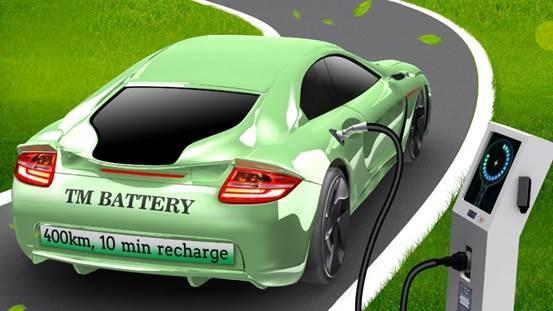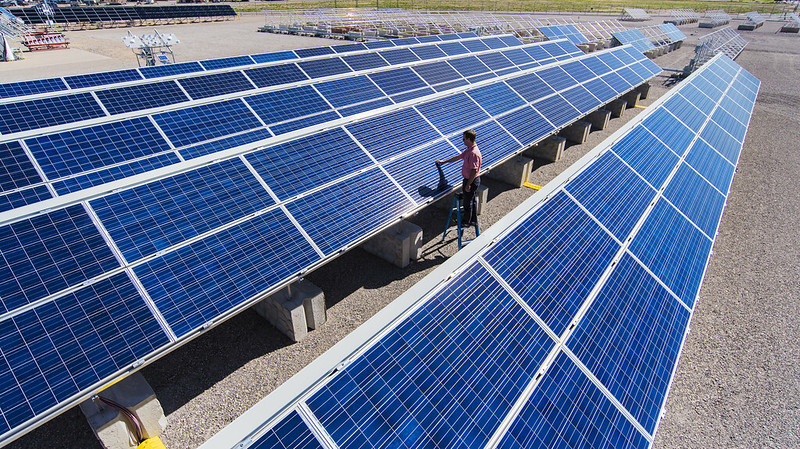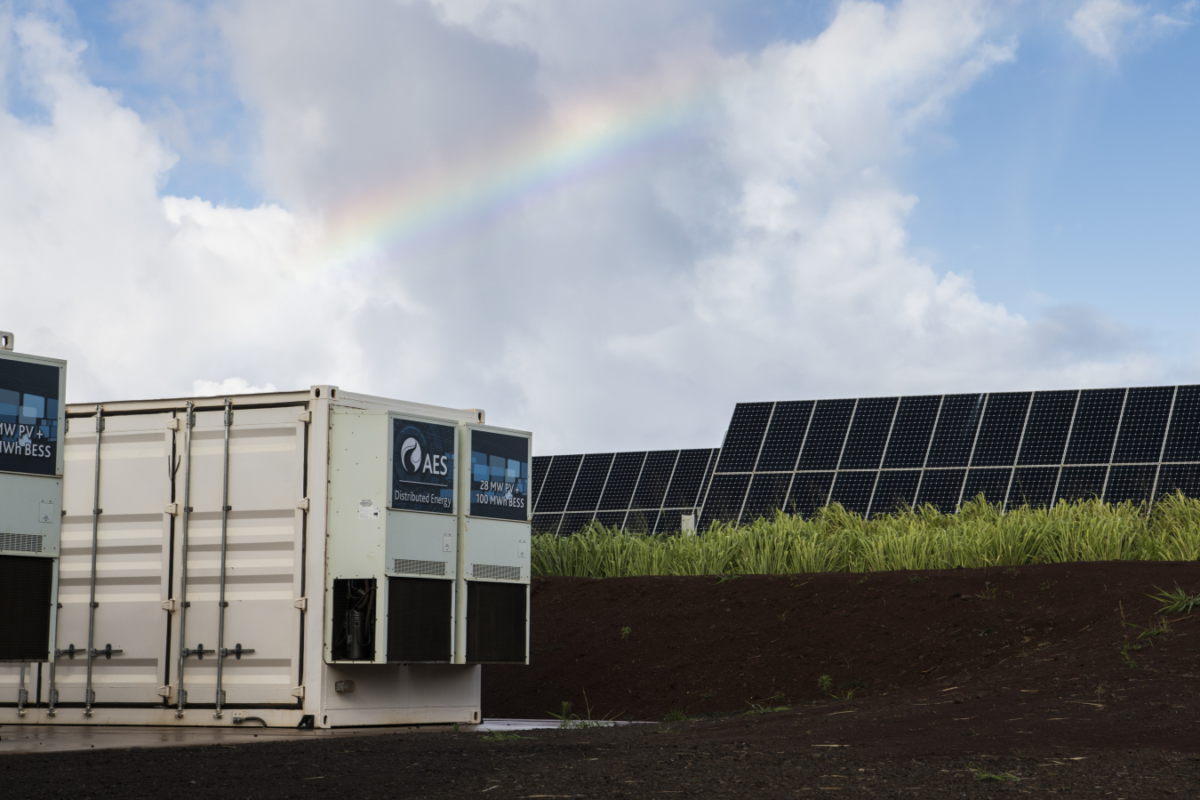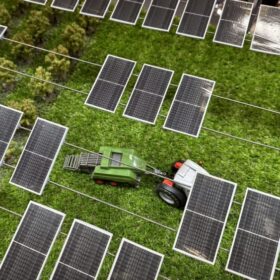The cost of solar power has dropped 90% over the last two decades and will likely fall another 15% to 25% in the decade to come, says Wood Mackenzie in a new report.
By 2030, solar will become the cheapest source of new power in every U.S. state, plus Canada, China, and 14 other nations.
The report, Total eclipse: How falling costs will secure solar’s dominance in power, calls the solar power industry “highly investible” due to its growing ability to meet both economic and policy goals.
Wood Mackenzie research director Ravi Manghani said: “As the world strives to recover from the economic slump caused by the Covid-19 pandemic and simultaneously meet the climate and environmental goals of the Paris Agreement, solar is uniquely placed to advance efforts towards a low-carbon, sustainable future.”
Solar is already the cheapest form of new electricity generation in 16 states, plus Spain, Italy, and India, the report said. Even with the Covid-19 pandemic, global installations exceeded 115 GW in 2020, compared to 1.5 GW in 2006.
While the growth of solar to this scale was driven partially by government subsidies and environmental goals, solar generation is now attractive based on price alone. In the next decade, Wood Mackenzie expects more cost reduction to be driven by growth and development in several technologies:
Bifacial panels. New solar cell technology allows both sides of a panel to generate as much as 15% more power.
Larger solar modules. This allows more of each panel’s surface area to generate power, leading to big gains in output.
Trackers. More solar installations include motorized systems that track the sun’s movement and change the alignment of the panels to increase energy capture.
Wood Mackenzie said that its outlook only factored in technological improvements that are already well into the commercial development pipeline. The projections do not assume any breakthroughs in next-generation solar technology or other innovations, which could provide further upside to the outlook.
Operating costs are expected to drop as well over the next decade, the report said. Technologies that are already widely in use by the wind power industry, such as using drones and thermal imaging for inspections, will make operations more efficient, as will developing technologies such as artificial intelligence.
The sector is not without risk for some players, Wood Mackenzie said. For example, as costs drop and installed solar capacity increases, wholesale prices may decline as well, reducing profitability. Even so, falling prices should allow solar to displace coal and other more expensive technologies and increase its markets share.
The report said that battery storage is becoming a larger part of the solar development equation as peak-price hours for electricity still coincide with solar generation hours in most markets. Both developers and utilities are preparing for potential changes in demand by including storage in their plans.
Freedom Forever extends its Sunrun run
Freedom Forever, one of the largest residential solar installers, has selected Sunrun as its primary solar + battery as-a-service provider for the next three years. The company will leverage Sunrun’s home solar and battery service offering, as well as its favorably branding among consumers.
Sunrun has been part of Freedom Forever’s growth over the last three years. The business has expanded from seven states at the beginning of 2020 to 20 states by the end of the year.
The expanded partnership with Freedom Forever is intended to expand Sunrun’s footprint in existing markets, with plans to enter new markets.
Quick-charge EV battery
Penn State engineers are developing lithium iron phosphate batteries that they say combine a range of 250 miles with the ability to charge in 10 minutes.
“We developed a pretty clever battery for mass-market electric vehicles with cost parity with combustion engine vehicles,” said Chao-Yang Wang, director of the Electrochemical Engine Center at Penn State. “There is no more range anxiety and this battery is affordable.”

Image:Chao-Yang Wang's lab, Penn State
The researchers say that the battery should be good for 2 million miles in its lifetime.
They report in Nature Energy that the key to long-life and rapid recharging is the battery’s ability to quickly heat up to 140 degrees Fahrenheit, for charge and discharge, and then cool down when the battery is not working. The fast charge allows developers to downsize the battery without incurring range anxiety.
The battery uses a self-heating approach previously developed in Wang’s center. The self-heating battery uses a thin nickel foil with one end attached to the negative terminal and the other extending outside the cell to create a third terminal. Once electrons flow it rapidly heats up the nickel foil through resistance heating and warm the inside of the battery. When the battery’s internal temperature is 140 degrees F, the switch opens and the battery is ready for rapid charge or discharge.
Wang’s team suggest that by using this self-heating method, they can use low-cost materials for the battery’s cathode and anode and a safe, low-voltage electrolyte. The cathode is thermally stable, lithium iron phosphate, which does not contain any of the expensive and critical materials like cobalt. The anode is made of very large particle graphite, a safe, light and inexpensive material.
According to Wang, these smaller batteries can produce a large amount of power upon heating — 40 kWh and 300 kW of power. An electric vehicle with this battery could go from zero to 60 miles per hour in 3 seconds and, he said, would drive like a Porsche.
This content is protected by copyright and may not be reused. If you want to cooperate with us and would like to reuse some of our content, please contact: editors@pv-magazine.com.









I am pinning this comment to every battery article that fails to provide useful metrics.
Here are useful battery metrics:
1. Energy density per weight, in Wh/kg.
2. Energy density per volume, in Wh/L.
3. Power density per weight, in W/kg.
4. Power density per volume, in W/L.
5. Temperature range of operation, in Celsius.
6. “C” characteristics, meaning the battery’s amperage rating that it can continuously produce for 1 hour (or given in Wh/1hour); the multiplier of that amperage rating that it can accept at maximum charge (or given in Wh/1hour); and, the multiplier of that amperage rating that it can produce at maximum discharge (or given in Wh/1hour).
7. Number of complete charge-discharge cycles it can withstand before dropping below 80% of its original capacity.
8. Percentage of stored energy lost when not in use.
9. Cost per Wh of energy storage.
10. Materials contents.
If the article cannot provide these metrics, the article is premature.
A useful list, to be sure!
I think it is misleading to claim that solar is cheaper in every state. So far, there is no evidence that utility scale solar farms are able to produce cheaper power than utility scale wind farms in the states with good wind. The U.S. electricity industry seems to agree with this, since in 2020 we built 18,000 MW’s of wind and only 12,000 MW’s of utility scale solar (not final figures, but approximately correct).
The simple point to make is that the wind farms produce an average of 35% of the time, whereas the solar farms produce no more than 22% of the time. That makes a price per MW an interesting feature, but does not make the power from these plants cheaper in many states.
Wind and solar have always received more attention than the real leader in providing more power at lower cost – efficiency – which in 2020 probably produced more power than either wind or solar added, but perhaps 2020 was the first year that efficiency didn’t produce more power than wind plus solar added. This is easy to spot if you ask yourself why the U.S. has not seen electricity consumption growth since 2007. The importance of efficiency is severely under-recognized, allowing Republican lawmakers in states like Ohio to get away with criminal activity in the guise of fake leadership.
We need more effort to put wind and solar into proper perspective. This is, after all, the opportunity of a lifetime to make clean energy the most important economic shift in human history. Other countries are moving faster than the U.S. and we should be sad about this. It’s hard to regret losses we don’t even notice.